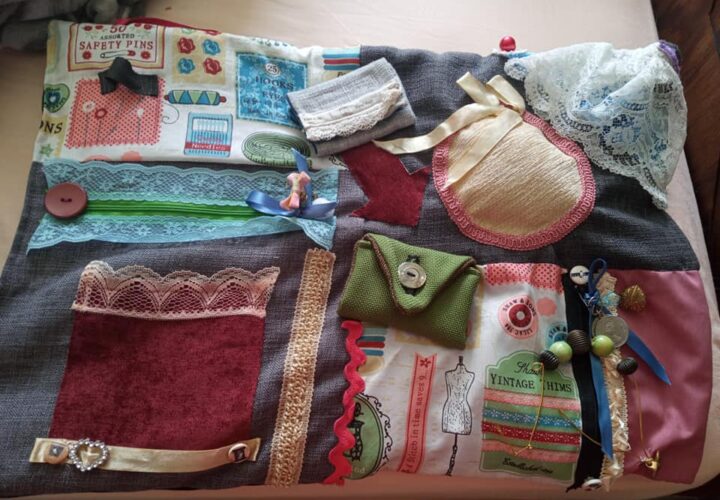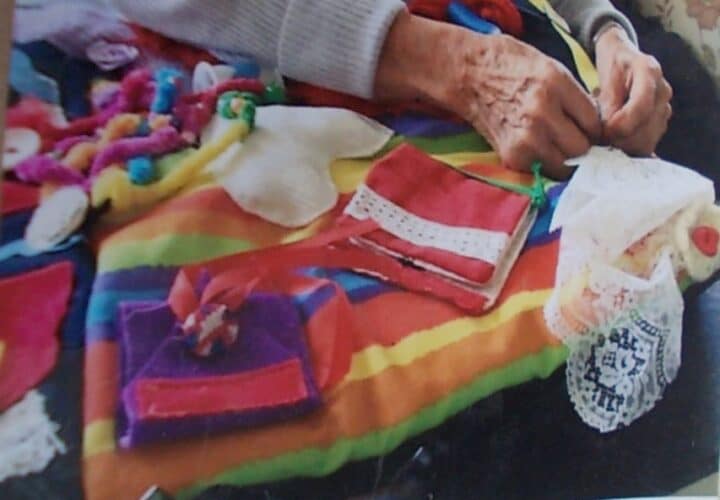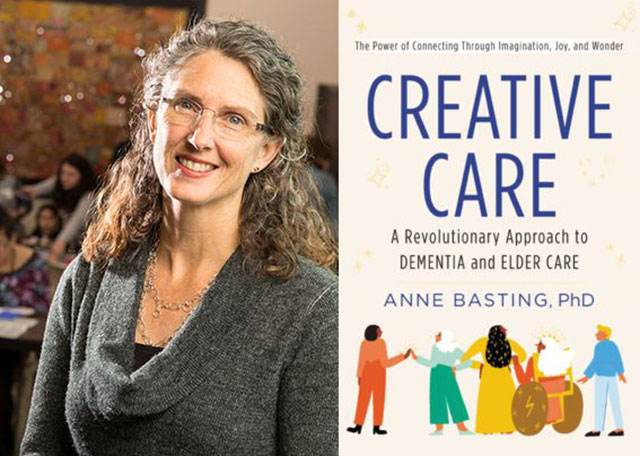We explore how fidget toys affect the brain — and what to look for when buying (or making) one, straight from the experts.
Updated February 2023: If you’ve ever kneaded your frustrations into a stress ball, incessantly clicked the back of a pen over and over again, or stretched a paper clip to the point of no return, you’ve used a fidget toy. While you can make just about anything into a fidget, there are also plenty of fidget-friendly items on the market. And experts say they make great gifts for people living with Alzheimer’s and other forms of dementia.
The reasons people use these “fidget toys” vary — from lowering stress to improving focus. There are many types of fidget aids that enhance particular circumstances. A fidget spinner, for example, helps expend nervousness or energy, whereas a jar of putty will keep one’s hands busy, so their mind can be more available to focus. They were even the subject of a recent scientific study to understand how they might be able to help students with ADHD in the classroom.
Can fidget toys help improve focus or lengthen a person’s attention span?
The average attention span for a healthy adult is just under 20 minutes. (Yes, there is a reason why TED Talks are never longer than 18 minutes!) But even then, many people resort to fidgeting to help them pay better attention. In fact, Associate Clinical Professor of Psychiatry at Harvard Medical School, John Ratey, found that just a small amount of movement, like fidgeting with hands, increases dopamine and norepinephrine — neurotransmitters which aid attention and focus.
But, staying focused is inherently a greater challenge for people with Alzheimer’s. The disease affects the hippocampus, a complex structure in the temporal lobe that plays a massive role in learning and memory.
How can fidget toys help people living with dementia?
South African based designer Melanie Oliver got a unique perspective of dementia through her mother’s lifelong work as a nurse in a retirement community. When her mother eventually retired at 77 due to dementia and other complications, Oliver became her full-time caretaker. But Oliver says it was when she saw her dear friend bedbound for three years due to Alzheimer’s that she knew she had to do something proactive to combat the symptoms.
“I saw her hand movements in the last days,” she told Being Patient. ”When so many brain neurons are destroyed, very basic movement seems to be the only thing left. Having something to soothe, stroke or fidget with seems to ease the anxiety and agitation.”.
Now, Oliver creates “fidget products” for people living with Alzheimer’s and dementia, for African Alzheimer Fidget Products. She uses her trio of vintage sewing machines to create everything from plush toys, to blankets, to twiddle muffs, designed specifically for people with dementia.
The objects are full of different colors and textures, but it’s not just about creative inspiration: Oliver’s work is informed by the brain science of dementia. For example, dementia caregiving expert Teepa Snow has explored how people with dementia experience changes to their visual cortex, including narrowed peripheral vision, difficulty with color and pattern contrast, problems with depth of field, etcetera. This was an eye opener for Oliver — and something she keeps in mind when creating her fidgets.
“I cannot stress how vital it is for folks who make and donate fidget items to read up on changes in the visual cortex, so they understand why they need to design within certain parameters,” Oliver said. “If you look at what is on sale for Etsy, the vast majority have no clue, have done zero research.”
With Oliver’s guidance, Being Patient put together some pointers for creating your own fidget toy, or what to look for when buying one.
1. Textures, activities
Fidget items usually tap into the sensory system, but activity features can often be added as well. Examples include incorporating beads, buckles, velcro wallets and pockets to encourage the fidgeter to move their hands.
If you were to incorporate a cloud, for instance, Oliver recommends using “a white decal of a cloud in a soft, padded material” so the person can feel the white raised shape, even though they may have trouble seeing it.
2. Don’t go overboard
People with advanced neurodegenerative diseases often have a narrowed peripheral vision, or as Teepa Snow calls it “Binocular Vision.” This means that in severe cases of dementia, a person’s visual field can reduce to just 12 inches around, which feels like they’re wearing binoculars. Because of this, Oliver encourages fidgets to be small and manageable. “Making gigantic fidget items is pointless, even though they can feel what is going on, they cannot see, or their field of vision is vastly narrowed,” Oliver explains.
3. Choose colors wisely
Because visuoperceptual difficulties are common among people with Alzheimer’s or dementia, they may struggle with differences in contrast and may be bothered by white, opaque, shiny or reflective items. Oliver suggests using reds, oranges and yellows in the event of visual impairments like macular degeneration, which causes loss in the center of the field of vision.
4. Keep it simple
“Due to the changes in a person’s mental acuity and vision, they battle to detect depth perception or make out different patterns,” Oliver said. So, simplicity is key.
“Using tiny floral prints, or complicated geometric designs, for instance, is pointless,” she added. “My advice regarding patterns is this: Big, bold, thick margins.”
5. Contrast is key
“My fidget items are very brightly colored, or when I only have plain material, they will always have a bright focal or accent color,” Oliver said. “A lot of clients are a wee bit gobsmacked when they see how very bright the colors are, but then I explain changes in the visual cortex of the brains of folks with dementia. Making an item that has two shades of pink, may look good to you, but does nothing for the person with brain damage looking at it,” she explains.
“Many family members are reluctant to present something they perceive as beneath that person’s dignity, for example, if it is too bright, but my greatest compliment is when a toddler is attracted to an item,” Oliver said.
6. Be Resourceful
There’s no need to shell out extra cash to make a great fidget toy. Fabric scraps, old buttons, or repurposing unused toys are just a few of the ways you can start your fidget exploration, right out of the comfort of your own home. ”I started out using scraps of material I had at home, but then had the bright idea of asking interior decorator’s for old sample books, or material offcuts, as there was no money to buy much,” Oliver recalled. Don’t let cost be a barrier to making these important toys for your loved ones. Making fidgets for this often forgotten community brings Oliver a sense of purpose and levity.
“This is not a journey anyone wants to take, but I am glad I am traveling with my mother.”
Why “Fidget” Objects Are All Over Dementia-Friendly Gift Lists This Year
UPDATE: 00:54, 6 February, 2023 — This article from February 2021 has been updated with new information to help our readers.



